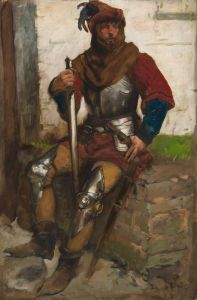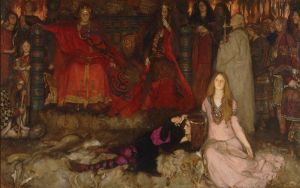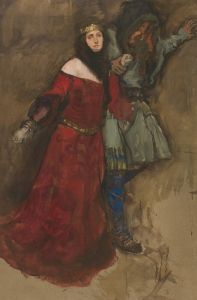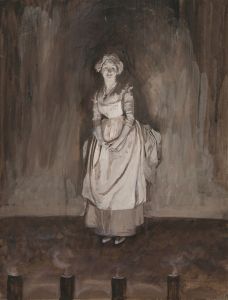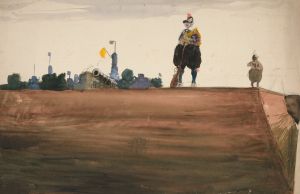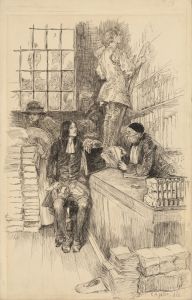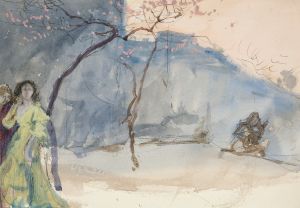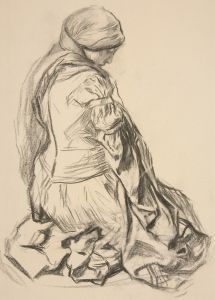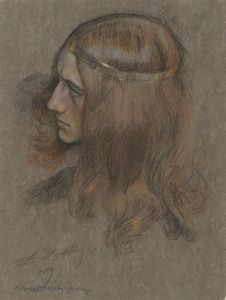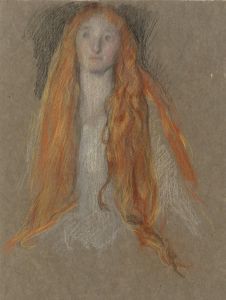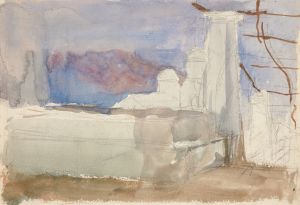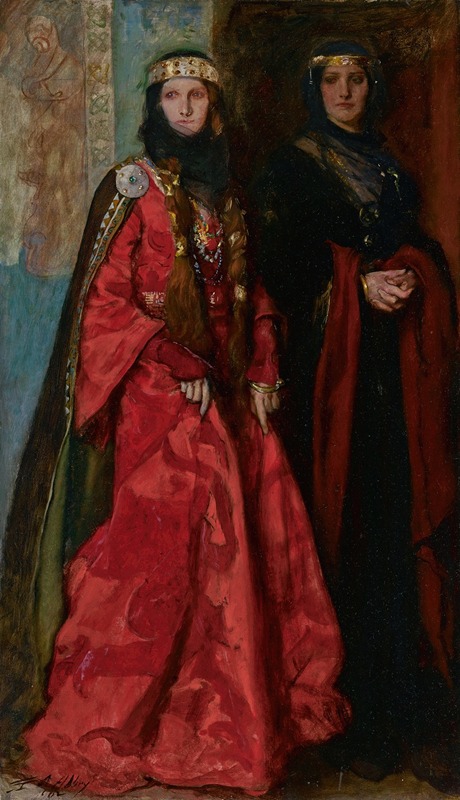
Goneril and Regan, King Lear, Act I, Scene I
A hand-painted replica of Edwin Austin Abbey’s masterpiece Goneril and Regan, King Lear, Act I, Scene I, meticulously crafted by professional artists to capture the true essence of the original. Each piece is created with museum-quality canvas and rare mineral pigments, carefully painted by experienced artists with delicate brushstrokes and rich, layered colors to perfectly recreate the texture of the original artwork. Unlike machine-printed reproductions, this hand-painted version brings the painting to life, infused with the artist’s emotions and skill in every stroke. Whether for personal collection or home decoration, it instantly elevates the artistic atmosphere of any space.
Goneril and Regan, King Lear, Act I, Scene I is a painting by the American artist Edwin Austin Abbey, completed in 1897. The artwork is based on a pivotal scene from William Shakespeare's tragedy King Lear, specifically Act I, Scene I, where King Lear divides his kingdom among his three daughters based on their declarations of love for him. The painting focuses on the two elder daughters, Goneril and Regan, who deceitfully profess their love for their father to gain power, setting the stage for the play's exploration of betrayal, loyalty, and familial conflict.
Edwin Austin Abbey (1852–1911) was a prominent illustrator and painter known for his depictions of literary and historical subjects. Born in Philadelphia, Pennsylvania, Abbey moved to England in 1878, where he became associated with the Pre-Raphaelite and Aesthetic movements. His works often drew inspiration from Shakespearean plays, and he was particularly skilled at capturing the drama and emotion of key moments in literature. Abbey's attention to historical detail and his ability to convey complex narratives visually made him one of the most respected artists of his time.
The painting portrays Goneril and Regan in a moment of calculated manipulation, emphasizing their cunning and ambition. Abbey's composition and use of color highlight the contrast between the sisters' outward expressions of devotion and their inner deceit. The figures are dressed in elaborate costumes that reflect the Elizabethan era, consistent with Abbey's commitment to historical accuracy in his work. The setting is opulent, with rich textures and intricate details that evoke the grandeur of a royal court.
This painting is part of a series of works by Abbey that illustrate scenes from Shakespeare's plays. Abbey's interest in King Lear reflects the broader fascination with Shakespeare in the 19th century, a period when the playwright's works were frequently adapted and celebrated in visual art, theater, and literature. Abbey's interpretation of the scene captures the tension and foreboding that underpin the play's tragic narrative.
The painting is housed in the Yale University Art Gallery in New Haven, Connecticut. It remains a significant example of Abbey's artistic legacy and his contribution to the visual interpretation of Shakespearean drama.





